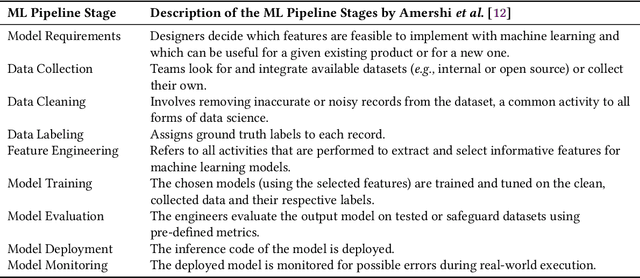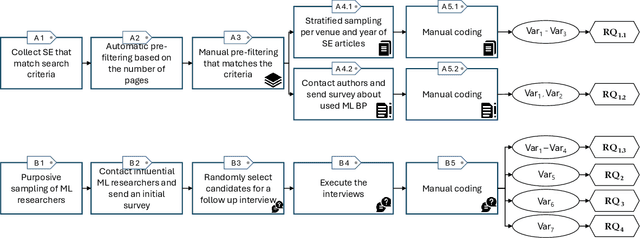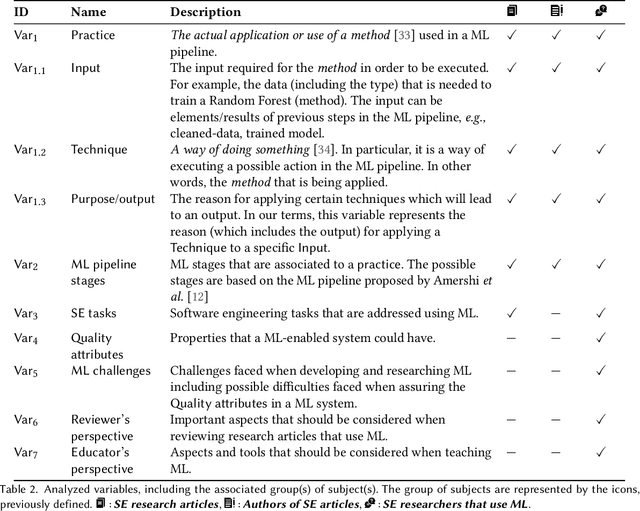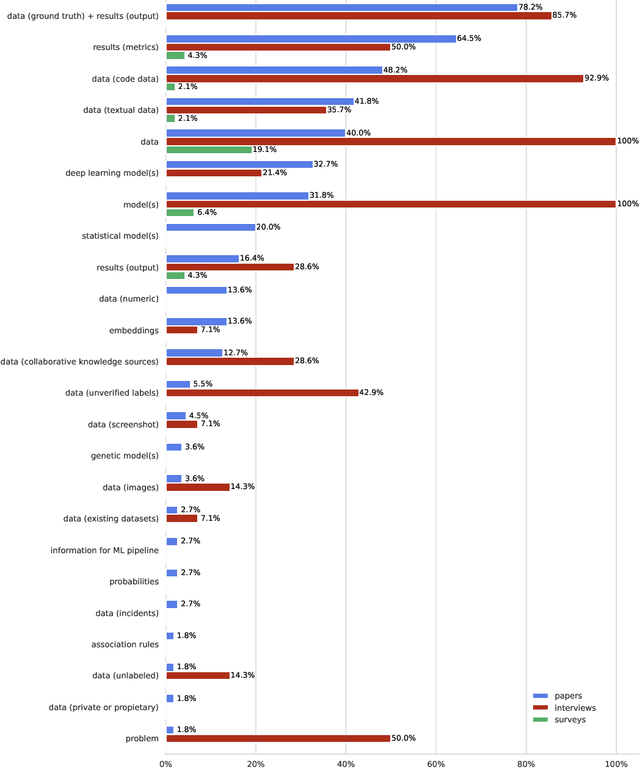Mario Linares-Vásquez
Perspective of Software Engineering Researchers on Machine Learning Practices Regarding Research, Review, and Education
Nov 28, 2024



Abstract:Context: Machine Learning (ML) significantly impacts Software Engineering (SE), but studies mainly focus on practitioners, neglecting researchers. This overlooks practices and challenges in teaching, researching, or reviewing ML applications in SE. Objective: This study aims to contribute to the knowledge, about the synergy between ML and SE from the perspective of SE researchers, by providing insights into the practices followed when researching, teaching, and reviewing SE studies that apply ML. Method: We analyzed SE researchers familiar with ML or who authored SE articles using ML, along with the articles themselves. We examined practices, SE tasks addressed with ML, challenges faced, and reviewers' and educators' perspectives using grounded theory coding and qualitative analysis. Results: We found diverse practices focusing on data collection, model training, and evaluation. Some recommended practices (e.g., hyperparameter tuning) appeared in less than 20\% of literature. Common challenges involve data handling, model evaluation (incl. non-functional properties), and involving human expertise in evaluation. Hands-on activities are common in education, though traditional methods persist. Conclusion: Despite accepted practices in applying ML to SE, significant gaps remain. By enhancing guidelines, adopting diverse teaching methods, and emphasizing underrepresented practices, the SE community can bridge these gaps and advance the field.
The Rise and Fall of Software Engineering
Jun 14, 2024Abstract:Over the last ten years, the realm of Artificial Intelligence (AI) has experienced an explosion of revolutionary breakthroughs, transforming what seemed like a far-off dream into a reality that is now deeply embedded in our everyday lives. AI's widespread impact is revolutionizing virtually all aspects of human life, and software engineering (SE) is no exception. As we explore this changing landscape, we are faced with questions about what the future holds for SE and how AI will reshape the roles, duties, and methodologies within the field. The introduction of these groundbreaking technologies highlights the inevitable shift towards a new paradigm, suggesting a future where AI's capabilities may redefine the boundaries of SE, potentially even more than human input. In this paper, we aim at outlining the key elements that, based on our expertise, are vital for the smooth integration of AI into SE, all while preserving the intrinsic human creativity that has been the driving force behind the field. First, we provide a brief description of SE and AI evolution. Afterward, we delve into the intricate interplay between AI-driven automation and human innovation, exploring how these two components can work together to advance SE practices to new methods and standards.
What are the Machine Learning best practices reported by practitioners on Stack Exchange?
Jan 25, 2023



Abstract:Machine Learning (ML) is being used in multiple disciplines due to its powerful capability to infer relationships within data. In particular, Software Engineering (SE) is one of those disciplines in which ML has been used for multiple tasks, like software categorization, bugs prediction, and testing. In addition to the multiple ML applications, some studies have been conducted to detect and understand possible pitfalls and issues when using ML. However, to the best of our knowledge, only a few studies have focused on presenting ML best practices or guidelines for the application of ML in different domains. In addition, the practices and literature presented in previous literature (i) are domain-specific (e.g., concrete practices in biomechanics), (ii) describe few practices, or (iii) the practices lack rigorous validation and are presented in gray literature. In this paper, we present a study listing 127 ML best practices systematically mining 242 posts of 14 different Stack Exchange (STE) websites and validated by four independent ML experts. The list of practices is presented in a set of categories related to different stages of the implementation process of an ML-enabled system; for each practice, we include explanations and examples. In all the practices, the provided examples focus on SE tasks. We expect this list of practices could help practitioners to understand better the practices and use ML in a more informed way, in particular newcomers to this new area that sits at the intersection of software engineering and machine learning.
 Add to Chrome
Add to Chrome Add to Firefox
Add to Firefox Add to Edge
Add to Edge